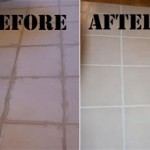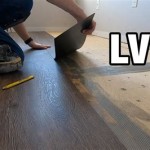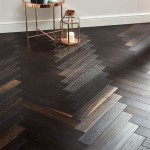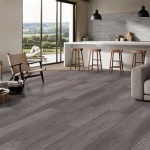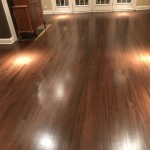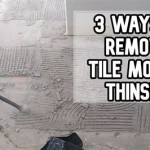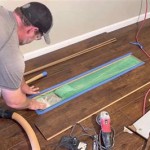How to Remove Sticky Residue From Floor Boards In House
Dealing with sticky residue on floorboards is a common household challenge. This unsightly and often stubbornly clinging substance can result from various sources, including dropped food, spilled beverages, adhesives, cleaning product buildup, and even tracked-in dirt and grime. The precise approach to removing the residue will depend on the type of flooring material involved, the nature of the residue itself, and the length of time it has been adhered to the surface. Employing the correct methods and appropriate cleaning solutions is crucial to effectively eliminate the stickiness without damaging the underlying floorboards.
Before embarking on any cleaning procedure, it is paramount to identify the type of floorboard material. Common types include hardwood (sealed or unsealed), laminate, vinyl, and tile. Each material possesses unique characteristics and requires specific cleaning products and techniques. Applying an inappropriate cleaner or abrasive method can result in scratching, discoloration, or even warping of the floorboards. Always consult the manufacturer's guidelines for recommended cleaning practices for your specific flooring type.
Once the floorboard material is identified, the next step involves assessing the nature of the sticky residue. Is it a sugary substance, an oily deposit, or a dried adhesive? Understanding the composition of the residue will guide the selection of the most effective cleaning solution. For instance, sugary substances may respond well to warm water, while oily residues may require a degreasing agent. Adhesive residues may necessitate a solvent-based remover, but caution is advised to ensure compatibility with the floorboard material.
Proper preparation is essential to streamline the cleaning process and protect the surrounding areas. Begin by sweeping or vacuuming the affected area to remove any loose debris, such as dust, dirt, and crumbs. This prevents the debris from being ground into the floor during cleaning, which could cause scratches. Consider placing a drop cloth or towel around the area to prevent cleaning solutions from dripping onto adjacent surfaces. Ensure adequate ventilation by opening windows or using a fan, especially when working with solvent-based cleaners.
Key Point 1: Assessing the Residue and Selecting the Appropriate Cleaning Solution
The selection of the correct cleaning solution is critical to effectively remove sticky residue without causing damage to the floorboards. Different types of residue require different approaches. Here are some common types of residue and suggested cleaning solutions:
- Sugary Residue: Sugary spills from juice, soda, or candy can leave a sticky residue that attracts dirt and insects. A solution of warm water and a mild dish soap is often sufficient to dissolve the sugar and remove the stickiness. Avoid using excessive amounts of water, especially on hardwood floors, as this can lead to water damage. Wring out the cleaning cloth or mop thoroughly to minimize moisture exposure.
- Oily Residue: Oily residue can result from cooking splatters, food spills, or tracked-in grease. A degreasing cleaner, such as a solution of vinegar and water or a commercially available degreaser specifically formulated for floors, can help to break down the oil. When using a degreaser, follow the manufacturer's instructions carefully and test the solution on an inconspicuous area of the floor first to ensure it does not cause discoloration or damage.
- Adhesive Residue: Adhesive residue can be left behind by stickers, tape, or glue. This type of residue can be particularly stubborn to remove. Several options are available, including adhesive removers specifically designed for household use, rubbing alcohol, or even a hairdryer to soften the adhesive before attempting to scrape it off. Always test the chosen method on an inconspicuous area first to ensure it does not damage the floor finish.
- Wax Residue: Old wax buildup or spills from candles can leave a sticky and sometimes cloudy residue. For wax residue, consider using mineral spirits or a wax remover specifically designed for floors. Apply the solution according to the manufacturer's instructions and use a soft cloth to gently rub the residue away. Ensure adequate ventilation when working with mineral spirits.
- General Grime and Buildup: Over time, general grime and buildup from cleaning products can create a sticky film on floorboards. A solution of warm water and a pH-neutral floor cleaner can help to remove this buildup. Avoid using harsh chemicals or abrasive cleaners, as these can damage the floor finish.
In addition to these common types of residue, it is important to consider whether the floorboards are sealed or unsealed. Unsealed hardwood floors are more susceptible to water damage and staining, so it is crucial to use minimal moisture and avoid harsh chemicals. Sealed hardwood floors are more resistant to damage but can still be affected by abrasive cleaners or excessive moisture. Laminate and vinyl floors are generally more durable and resistant to damage, but it is still important to use appropriate cleaning solutions and avoid abrasive methods.
Key Point 2: Step-by-Step Cleaning Process for Removing Sticky Residue
Once the appropriate cleaning solution has been selected, follow these steps to effectively remove the sticky residue:
- Apply the Cleaning Solution: Apply the chosen cleaning solution to the affected area. Use a clean cloth, sponge, or mop, depending on the size and location of the residue. Avoid applying the solution directly to the floor, as this can lead to excessive moisture exposure. Instead, dampen the cleaning tool with the solution and wring out any excess liquid. For stubborn residues, allow the solution to sit on the affected area for a few minutes to help loosen the stickiness. However, do not allow the solution to dry on the floor, as this can leave a residue of its own.
- Gently Scrub the Area: Use a soft cloth, sponge, or brush to gently scrub the affected area. Avoid using abrasive scrub brushes or steel wool, as these can scratch the floor finish. Apply gentle, circular motions to loosen the residue. For particularly stubborn residues, a plastic scraper or putty knife may be used, but exercise caution to avoid scratching the floor.
- Wipe Away the Residue: Once the residue has been loosened, wipe it away with a clean, damp cloth. Rinse the cloth frequently to remove any remaining residue. Avoid using excessive amounts of water, especially on hardwood floors.
- Dry the Floor: After wiping away the residue, dry the floor thoroughly with a clean, dry cloth. This helps to prevent water spots and moisture damage. For hardwood floors, it is particularly important to dry the floor quickly to minimize moisture exposure.
- Inspect and Repeat: Inspect the area to ensure that all of the sticky residue has been removed. If necessary, repeat the process until the floor is clean and free of residue. For particularly stubborn residues, it may be necessary to try a different cleaning solution or method.
Throughout the cleaning process, it is essential to monitor the floorboards for any signs of damage. If the floor finish begins to fade, scratch, or discolor, discontinue the cleaning process immediately and consult with a professional flooring contractor. It may be necessary to refinish or repair the floorboards to restore their original appearance.
Key Point 3: Preventative Measures to Minimize Sticky Residue Buildup
Preventing sticky residue from accumulating on floorboards is far preferable to dealing with the cleanup. Implementing proactive measures can significantly reduce the frequency and severity of these occurrences. Here are several preventative strategies:
- Promptly Clean Spills: The most effective way to prevent sticky residue is to clean up spills immediately. The longer a spill sits on the floor, the more likely it is to dry and create a sticky residue. Keep cleaning supplies readily available so that spills can be addressed quickly.
- Use Floor Mats and Rugs: Place floor mats at entryways to trap dirt, debris, and moisture before they are tracked onto the floorboards. Rugs in high-traffic areas can also help to protect the floor from spills and scratches.
- Protect Furniture Legs: Use felt pads or furniture coasters under the legs of furniture to prevent scratches and scuff marks. This also helps to prevent furniture from sticking to the floor and leaving behind residue.
- Avoid Wearing Shoes Indoors: Encourage family members and guests to remove their shoes before entering the house. This helps to prevent dirt, grime, and other contaminants from being tracked onto the floorboards.
- Regularly Sweep or Vacuum: Sweep or vacuum the floorboards regularly to remove loose dirt, dust, and debris. This helps to prevent these materials from being ground into the floor and creating a sticky film.
- Use Appropriate Cleaning Products: Use cleaning products that are specifically designed for the type of floorboards in your home. Avoid using harsh chemicals or abrasive cleaners, as these can damage the floor finish and leave behind a sticky residue. Follow the manufacturer's instructions carefully when using cleaning products.
- Control Humidity Levels: Maintain a consistent humidity level in your home to prevent moisture damage to the floorboards. Excessive humidity can cause wood floors to warp and buckle, while low humidity can cause them to dry out and crack. Use a humidifier or dehumidifier as needed to maintain a comfortable humidity level.
By implementing these preventative measures, homeowners can significantly reduce the likelihood of sticky residue buildup on their floorboards, preserving their appearance and prolonging their lifespan. Consistent care and attention are key to maintaining beautiful and clean floorboards.
When dealing with particularly stubborn or widespread sticky residue problems, or if the floorboards are damaged, consulting a professional cleaning service or flooring contractor is advisable. These professionals possess the expertise and equipment necessary to address complex cleaning challenges and perform any necessary repairs or refinishing.

How To Remove Glue From Wood Floors Pete S

How To Remove Sticky Residue From Hardwood Floors Diy Hometalk

Removing Glue Or Adhesive From Hardwood Floors The Speckled Goat

Flooring How Can I Remove Carpet Adhesive From Hardwood Floors Home Improvement Stack Exchange

Removing Glue Or Adhesive From Hardwood Floors The Speckled Goat

Removing Glue Tar Paper From Hardwood Floors Farmhouse Restoration Day In The Life

Floorboards In A Right State And How To Remove Removing Old Lino Backing Glue Varnish Period Property

How To Remove Sticky Residue From Hardwood Floors Diy Hometalk

Best Cleaner Ever To Remove Sticky Tape From Floors Etc Safe Easy

First Aid Remove Sticky Residue Simple Decorating Tips
See Also
